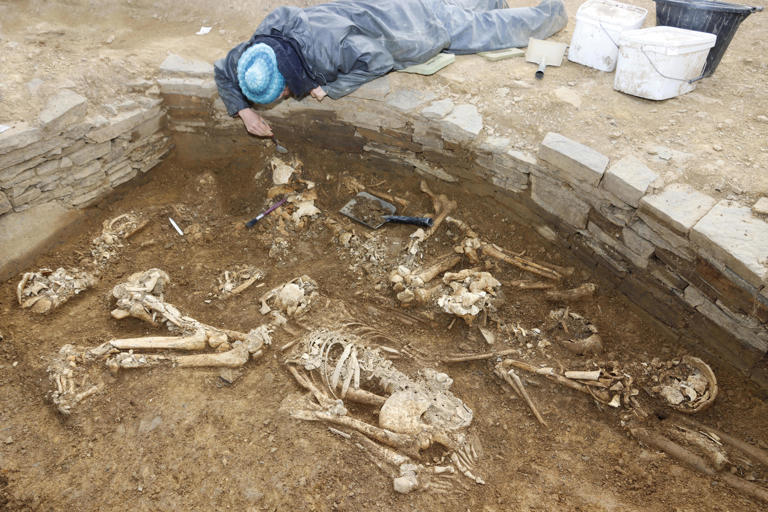The "incredibly rare" tomb, which is from the Neolithic era, was largely destroyed without record in the 19th century, according to the museum. Only 12 of such tombs have been found in Orkney. They're considered "the pinnacle of Neolithic engineering in northern Britain," the museum said.
The tomb, unearthed after a three-week excavation, has a large stone chamber at the center of a cairn, which is a human-made pile of stones usually raised as a marker for a burial mound. The stone chamber is surrounded by six smaller rooms.
Archaeologists found 14 articulated skeletons of men, women and children in one of the smaller side rooms, according to the museum. Other human remains and artifacts, including pottery, stone tools and a bone pin, were also discovered.
"The preservation of so many human remains in one part of the monument is amazing, especially since the stone has been mostly robbed for building material," Vicki Cummings, head of Cardiff University's School of History, Archaeology and Religion, said in a statement.

Archaeologists found 14 articulated skeletons of men, women and children in one room. / Credit: National Museums Scotland© Provided by CBS News
Cummings co-directed the excavation with Dr. Hugo Anderson-Whymark of National Museums Scotland.
The Holm tomb was buried beneath a pasture field. It had been largely destroyed in the late 18th or early 19th century in order to supply a nearby farmhouse with building material, according to the museum. In 1896, the farmer's son came across eight skeletons while digging in the ruins. His discovery was reported in The Orcadian, a newspaper.
The 1896 discovery prompted archeologists to search in the area.
"Orkney is exceptionally rich in archaeology, but we never expected to find a tomb of this size in such a small-scale excavation," Anderson-Whymark said. "It's incredible to think this once impressive monument was nearly lost without record, but fortunately just enough stonework has survived for us to be able to understand the size, form and construction of this tomb."
No comments:
Post a Comment